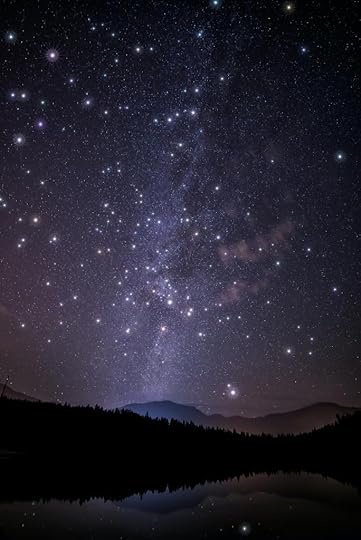Twinkling Stars And Constellations

Since time immemorial we have been fascinated by the sight of stars twinkling in a clear night sky. The practised eye of an imaginative onlooker can spot groupings of stars that appear to form a picture, perhaps of a heroic human, a mythical creature, an animal, or an everyday object. Known as constellations and drawing their names from ancient Middle Eastern, Greek, and Roman cultures, forty-eight had been identified by the time the telescope had been invented. They were made up of the brightest stars most easily observed with the naked eye.
From the 16th century improvements in the magnification powers of the telescope coupled with a more structured interest in the world and universe in which we lived and the opening up of the southern hemisphere led to the discovery of another thirty-eight constellations, the so-called modern constellations. Featuring dimmer and more distant stars, they were given names such as the Giraffe, Telescope, and the Peacock.
In 1930 the International Astronomical Union produced a definitive list of eighty-eight constellations, combining the ancient, whose number they augmented by splitting Argo into three, with the modern. Drawing an imaginary line around the space each of the constellations occupied in a two-dimensional representation of the sky, and ensuring that each of the boundary edges met, they created a celestial sphere of eighty-eight segments around the Earth.
This provided a rather neat solution to the problem of developing naming conventions and location descriptors for the billions of stars that did not fit neatly into a constellation, no matter how imaginative the onlooker was. While late 19th century scientists conjured up an adjective, sparsile, to describe these solo stars, one, though, rather like a supernova, which was to shine brightly for a while before rapidly plummeting into obscurity, nowadays, every star, whether sparsile or part of a constellation, is named by its co-ordinates in the celestial sphere.
While stars in the same constellation are unlikely to have any connection with each other, all the stars we observe in the night sky share two characteristics; they are part of the Milky Way, and they twinkle, the latter phenomenon celebrated in one of the very few nursery rhymes I learnt on my mother’s metaphorical knee to have survived our heightened sensitivity to all things racist, imperialist, sectarian, and sexist, Twinkle, twinkle little star. It is a joyous evocation of a child’s wonderment at the shimmering stars they see brightening up the firmament. Perhaps the key to its survival is that by the standards of other nursery rhymes it is relatively modern.
The lyrics are drawn from a poem written by Jane Taylor, The Star, which she included in a collection of verses entitled Rhymes for the Nursery published with her sister, Ann, in 1806. The poem consists of five stanzas of rhyming couplets, but the nursery rhyme generally just uses the opening four lines. The tune to which the words are set is drawn from the melody of a French children’s song, Ah! Vous dirai-je, maman, first published in 1761 and used by Mozart as the basis for his piano composition, Twelve Variations (1781 or 2).



